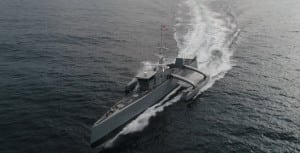
The Navy this week revealed more details about the ongoing Unmanned Integrated Battle Problem (UxS IBP) exercise being led by U.S. Pacific Fleet, including that it will have an offensive live-fire test. Rear Adm. (lower half) James Aiken, commander of Carrier Strike Group Three and executive agent of the IBP, told reporters during a press call on Tuesday the exercise will include three “vignettes” over the course of the April 19-26 exercise: a missile shoot; intelligence, surveillance and reconnaissance work…

 By
By 











